Processing Rice
by Dean Gunderson
This is the second Part of our series on growing and processing rice. To learn how to grow your own rice check out our blog post on it here.
So the rice is grown, the plants are harvested and have been dried, but now what? How is this dried grass plant turned into a bowl of delicious cooked rice? Well with the right tools, the right know-how, and a little bit of elbow grease it’s possible to grow rice starting from seed and ending in any rice dish desired.
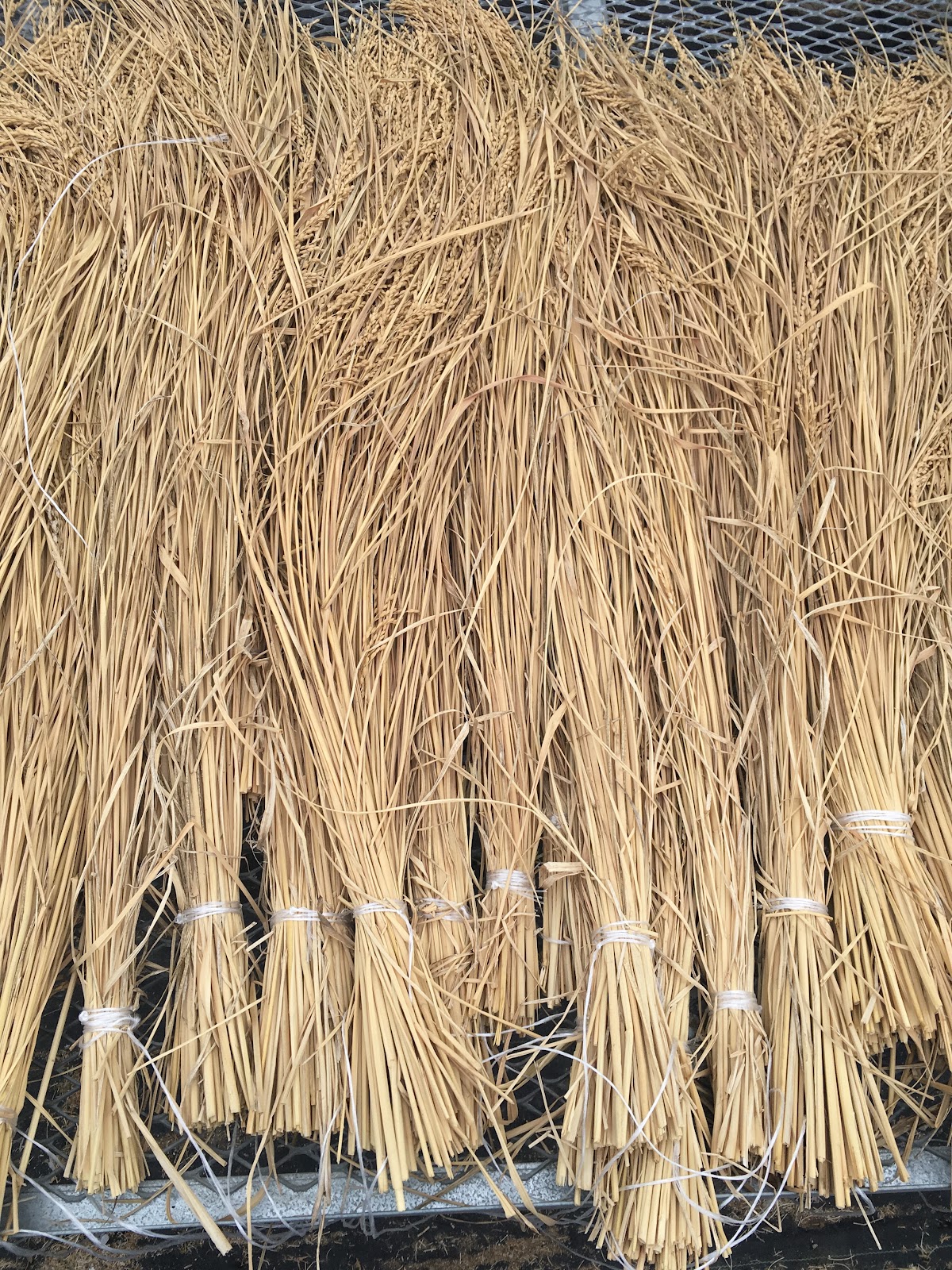
When it comes to processing rice there are three main steps. In order, those steps are to thresh the rice, dehull the rice, and finally to winnow the rice. Threshing is the process of removing the seeds (the grain) from the rest of the plant (the straw). Dehulling is taking the hull, which is the papery straw-colored covering that surrounds each individual rice seed, off of the grain. Winnowing is separating out the grain from the chaff, which is the name for the hull once it’s been removed from the grain. So let’s start at the beginning.
All that’s required to thresh grain is a little force. There are many ways to thresh rice but probably the easiest way for garden scale production is the trash can method. For this all that is needed is a trash can or some other large container. Grab a small bundle of dried rice plants and hold them about halfway up the stalk with the top of the plant, where all the seeds are, inside the trash can. Then vigorously move the bundle of rice back and forth hitting the inside walls of the trashcan until the grains have been knocked off into the trash can. After doing a couple of bundles you will get a feel for how fast to move the bundle and how much force to hit the sides with. It does require a fair amount of force so don’t be timid about it.
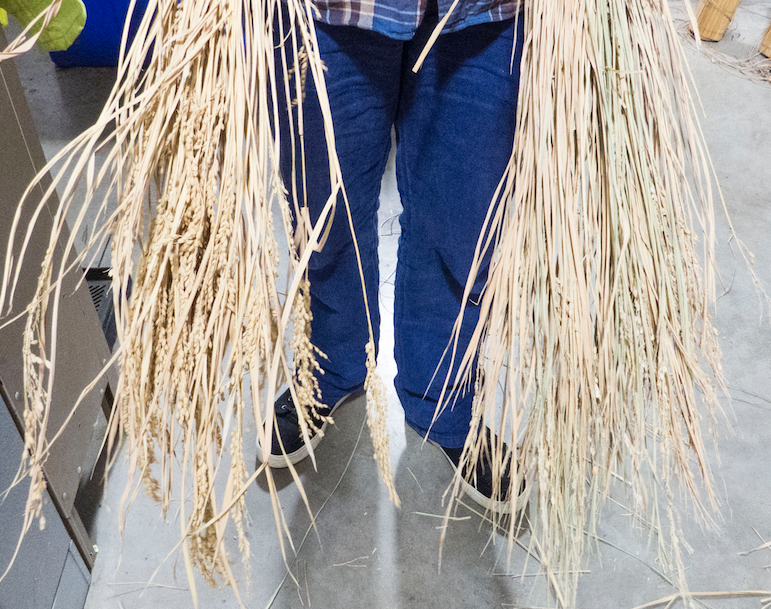
Rice bundle before (left) and after (right) threshing using the trash can method
There are plenty of other ways to thresh rice that can be tried if desired. One way is to cut a length of old garden hose and while holding the rice inside a trash can beat the seeds with the piece of hose to knock them off. Just beating the plants on the ground is another easy way to do it and the main way people have threshed grain since the beginning of agriculture. The main downside to this method is the seeds will often go flying and make a mess. Another way that is particularly fun if working with kids is to put the dried plants on a tarp and cover them with another tarp or the other side of the same tarp. Then have the kids walk or stomp all over the plants. This force will knock the seeds off the stalks. The main downside to this is that it takes more work to separate the seeds from all the straw.
Now to the hulling. Hulling requires the twisting, rubbing, or grinding of the seed with just enough force to rub the papery hull off but not grind the grain into flour. There are theoretically ways to do this without anything special and there are a lot of ideas on how to do this online. The internet suggests everything from rubbing it between the palms of the hands, laying the seeds on the table and rubbing them with a cutting board, twisting them on the ground under foot, a mortar and pestle, and on and on. We feel comfortable saying that all of these techniques are great and will work fine……if the goal is to eat a tablespoon of rice. Staff and Gateway Elementary students tried all these ideas. Even energetic kindergarteners stomping on the rice yielded only a small cup of rice.

Luckily one of our AmeriCORP VISTAs Evelyn, was able to find a solution. She was able to design, build, and write instructions on how to make a simple but really effective hand crank rice dehuller out of a cheap grain grinder, some rubber, and glue, for less than $30. So have a look here, do yourself a favor, and just build one of these, it’s pretty simple.
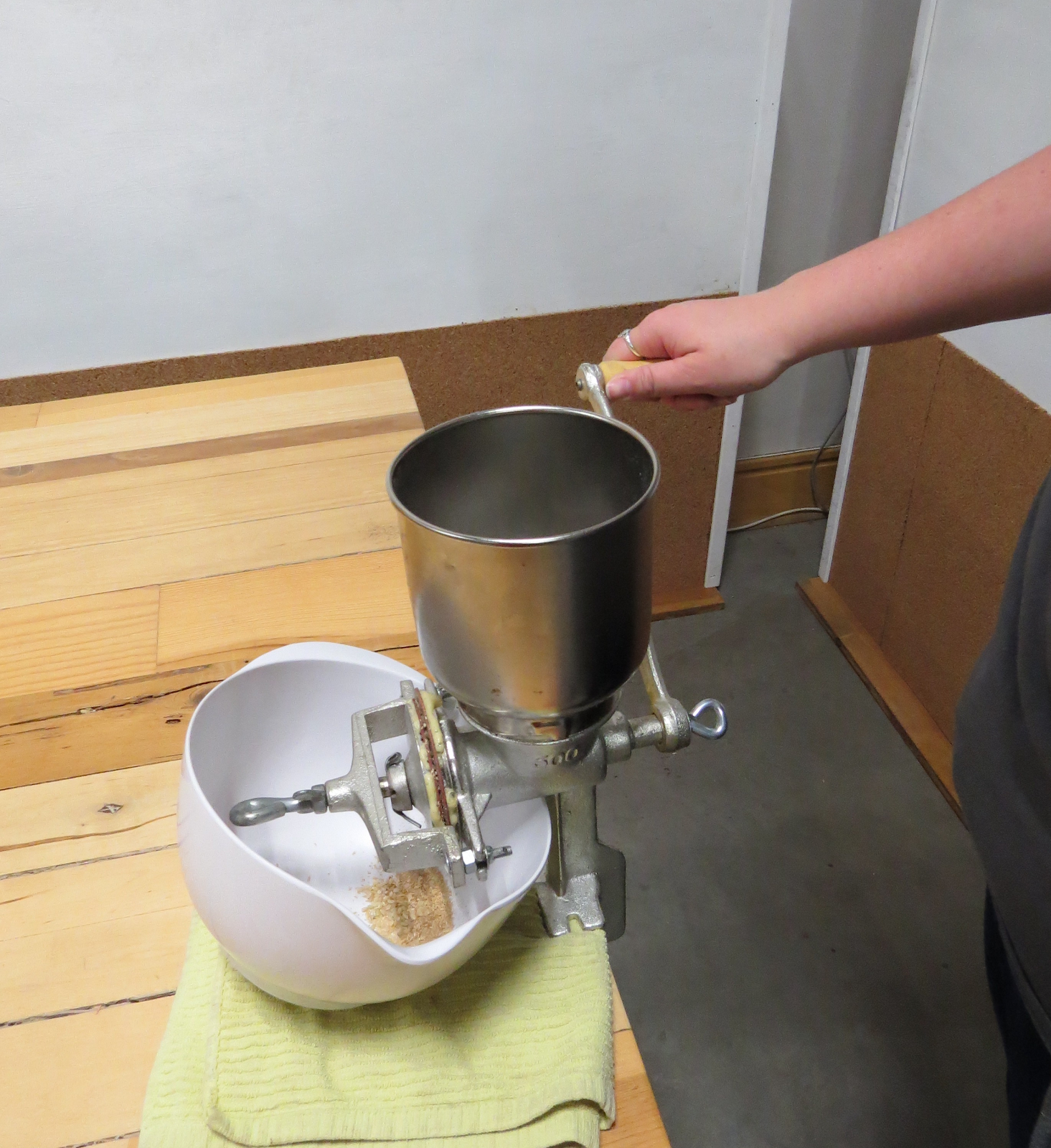
If you have any questions we are happy to help. The building instructions also have detailed instructions on how to use it. Essentially though it works by putting the unhulled rice in the top and cranking the handle until it all comes out and then run the same rice through again two more times and it is all dehulled and ready for the final step.
Now the last step is winnowing the grain from the chaff, which is just cleaning the grain. Chaff is very light and airy whereas the grain is relatively heavy. So the chaff just needs to be blown off. There are two main ways of doing this and which method to use is up to personal preference and the quantity of grain to be winnowed. If there is only a cup or two of dehulled rice the easiest way is usually to put it in a big bowl. Take the bowl of rice and chaff outside and while constantly swirling it inside the bowl forcefully blow into the bowl. The chaff will blow up and out and the heavier grain will remain. Keep doing this until all the chaff is gone.
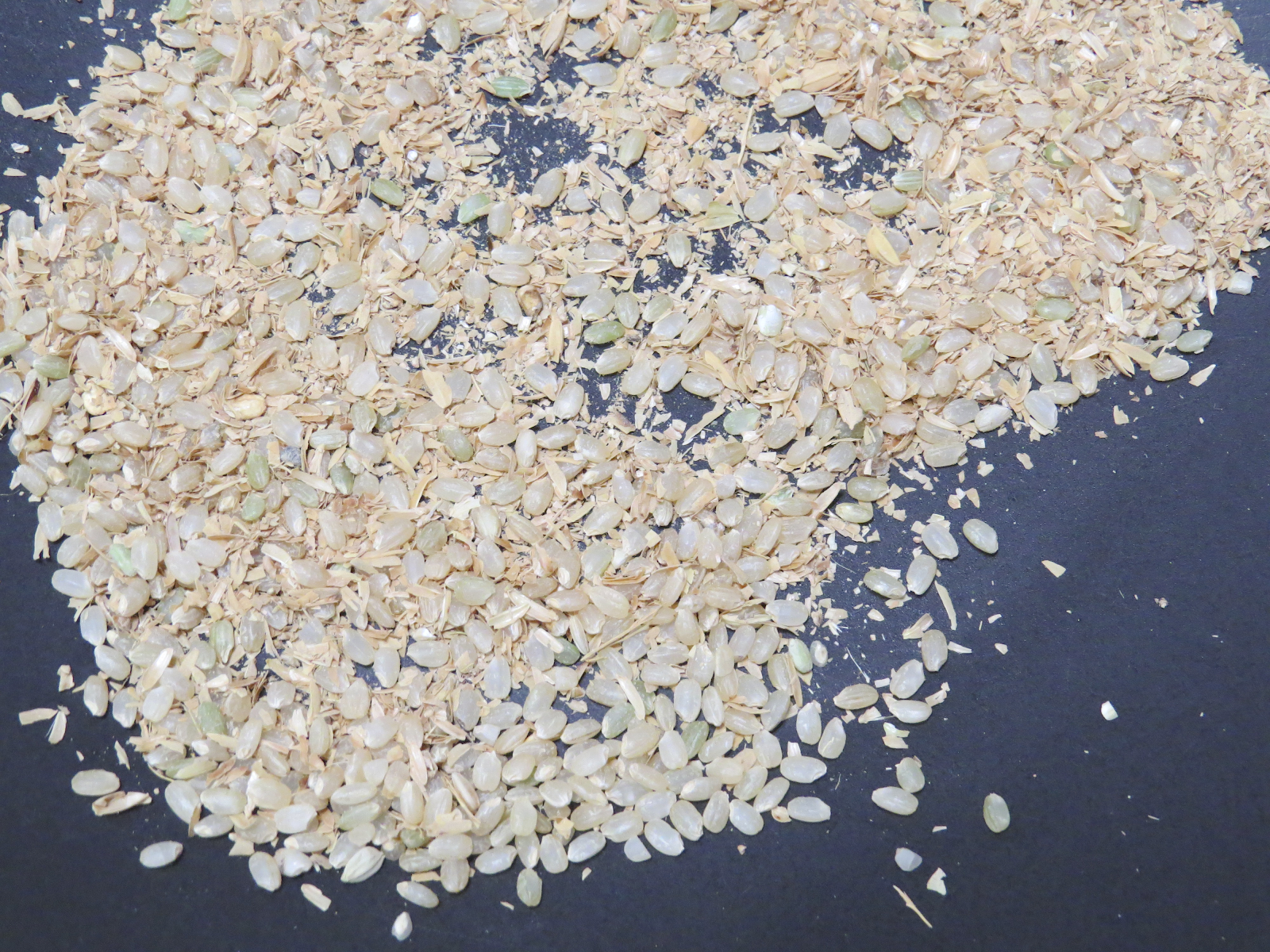
The other method is the most common method and the best if there is more than a cup or two. This method requires two large containers and a breezy day. Although it’s best to do this outside because it can get messy if you want to do it inside a fan can replace the wind. Hold the container with the rice and chaff about 18” or so above the empty container, which should be sitting on the ground, and slowly pour it into the empty container. The heavy rice grains will drop into the container but the lighter chaff will get carried away by the breeze. Keep pouring the rice and chaff mixture from one container to the next, increasing the distance between the two as you feel comfortable. Then once the chaff is blown off all that will be left is the ready to cook rice.
Now also don’t forget to use all that straw and chaff from the rice processing. The straw and chaff are great mulches for the garden, suppressing weeds and conserving moisture in garden beds. In addition to its use as mulch, the chaff can also be used to make seed starting mix, which is used to start seeds indoors. Mix 1 part rice chaff with 2 parts coco coir, which is a waste product of coconut farming, to make a good, sustainable seed starting mix.
I forgot, there is actually one more step left to process the rice, the most important step! Now it’s time to cook and eat some homegrown and processed St. Louis rice. Enjoy!

